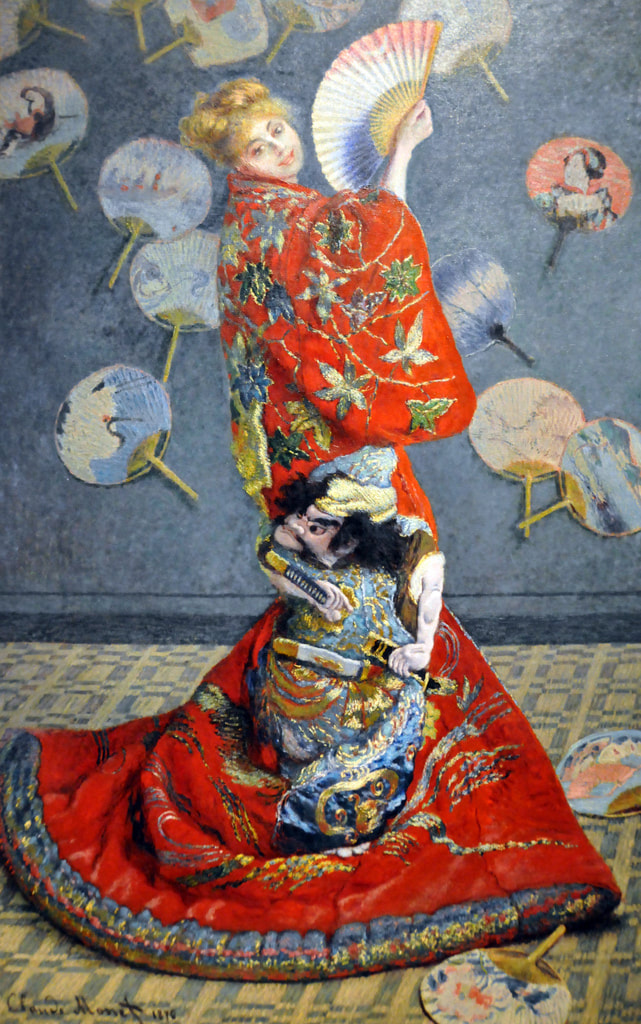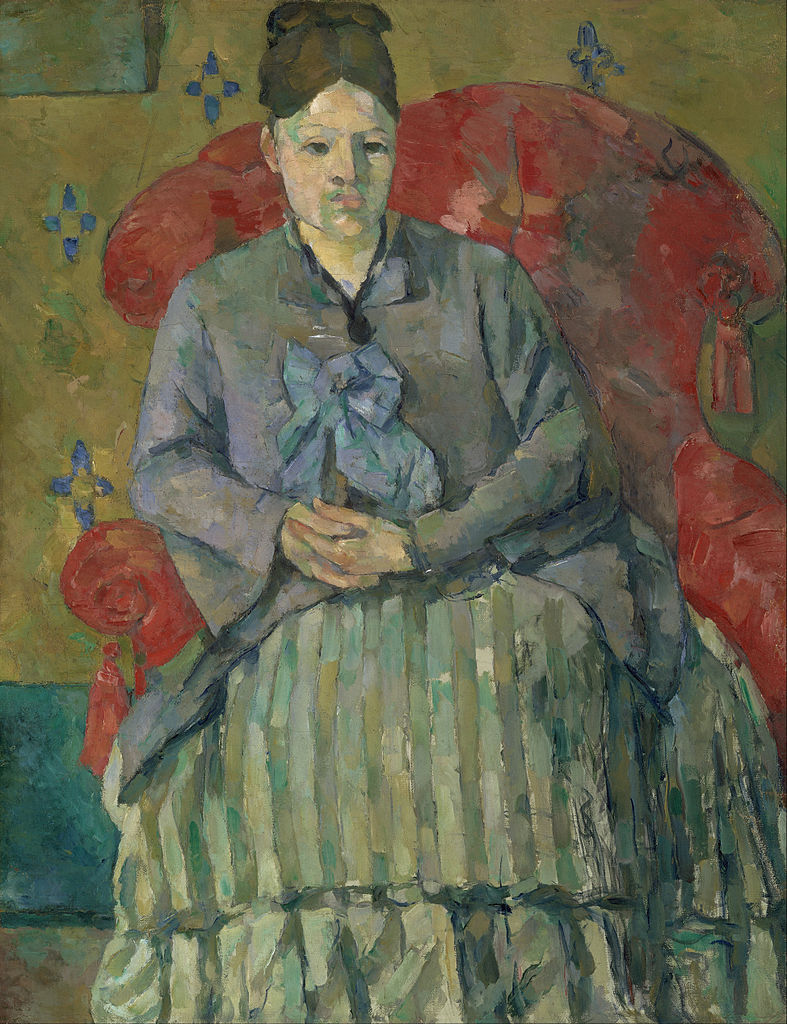|
Two Wives, Half Transformed
Each of them – Monet, Cezanne – used his wife as model for a painting that seems transformation rather than portrait: Madame Cezanne is more than half mountain, Madame Monet, monster samurai. i. Madame Cezanne in a Red Armchair I want to make of Impressionism an art solid as that of the museums. Cezanne Madame Cezanne’s face is a dead zone: gray patches mottle it, blotching ruddy skin; stolid, stony, expressionless, she looks as if she has been sitting for this painting for years, and she has: between views of Mont Sainte-Victoire and bowls of fruit, Cezanne’s returned over and over to her form. Presence now become absence, she’s lost in her skirt’s abundance gone mountain landscape, green and gray, finally an abstraction of colour, light flashing and glittering as it might upon the slopes of Mont Sainte-Victoire, on trees, a range of rocky outcroppings studded with mica, alight, glinting, as nothing is in the painting’s upper half, where a blood red armchair, walls of mustard, dun jacket, the black notes of Madame Cezanne’s hair and necklace absorb all light, refuse to reflect it to the viewer. In this his solid art, this woman he’s turned into a mountain, a massive landscape shining with light that where it touches her face, her flesh, illuminates only form not feeling, leaves the inner world as mysterious still as any tree’s thought or stone’s imagining. ii. La Japonaise (Camille Monet in Japanese Costume) “To emphasize her Western identity,” the Museum notes tell us, Monet had his wife Camille wear a blonde wig for this life-size portrait. Behind her, what should be wall is undefined space – a screen, perhaps, of sea-blue brocade – ; against it an array of floating fans seem casually strewn, some with painted scenes we can construe, others a blur of atmospheric color, line. Camille’s blonde head is archly tilted, as is the fan she’s holding: this one patterned in the colors of Japan’s flag. To the waist, her red brocade robe is delicately adorned with embroideries of flowers, leaves, winged forms suggesting birds, butterflies: ethereal forms. But at her waist, and as if from it, the figure of a grotesque samurai emerges: so three-dimensional it seems not the robe’s fabric but a living creature superimposed on Camille’s costume – surely the arm that holds his dagger’s hilt is not an image on the falling folds of robe. The comic menace of his gaze upwards echoes Camille’s glance, down-tilted, while the contorted muscles of his arm are dark mirror of the white flesh of her fan-holding hand. Below, the robe’s train widens to a swirl of brilliant color, serpentine curve, ambiguous rippling waters beneath it, that dark exotic sea giving birth to the portrait’s strange dichotomy. Monet was mocking the current Parisian fad for all things Japanese, we’re told. The underside of jest is warning: be careful what you play with. Sandra Kohler Sandra Kohler is a poet and teacher. Her third collection of poems, Improbable Music, (Word Press) appeared in May, 2011. Earlier collections are The Country of Women (Calyx, 1995) and The Ceremonies of Longing, winner of the 2002 Associated Writing Programs Award Series in Poetry (University of Pittsburgh Press, 2003). Her poems have appeared in journals, including The New Republic, The Beloit Poetry Journal, Prairie Schooner, and many others over the past 40 years.
0 Comments
Your comment will be posted after it is approved.
Leave a Reply. |
The Ekphrastic Review
COOKIES/PRIVACY
This site uses cookies to deliver your best navigation experience this time and next. Continuing here means you consent to cookies. Thank you. Join us on Facebook:
July 2024
|





